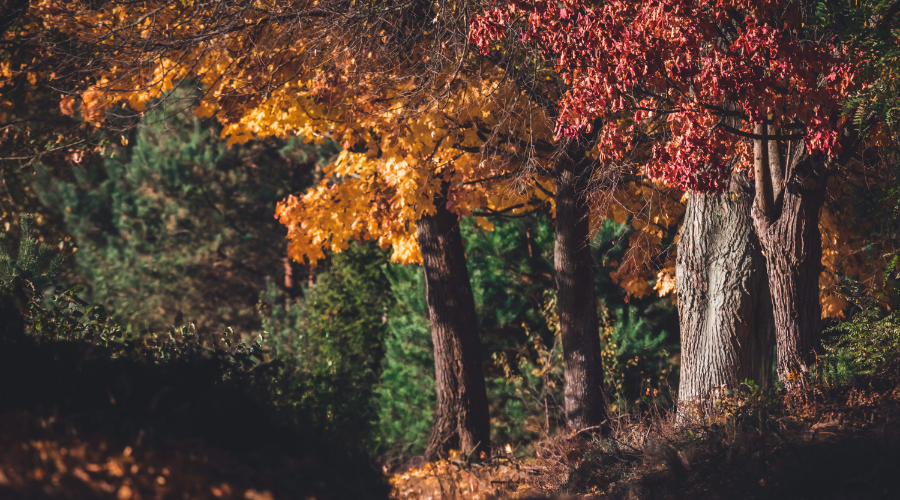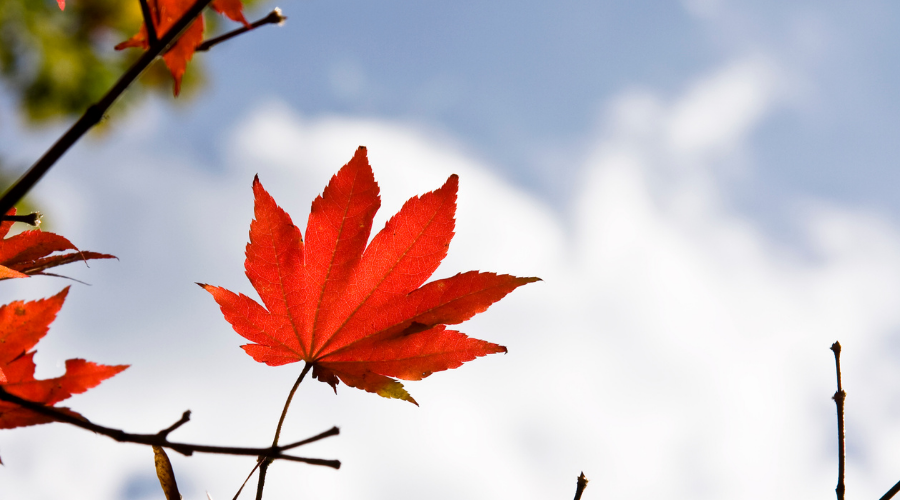Autumn is one of the most beautiful times of the year, where leaves turn orange, red, or yellow and create picturesque scenery all around us. Then, before you know it, all of those leaves are on the ground and in our backyards, ready to be jumped in or composted. But do we really know why this happens? Why do the leaves fall off the trees, and do all trees lose their leaves?
First, let's talk about the types of trees. While there are thousands of tree species throughout the world, they are broken down into two primary categories; deciduous and coniferous. Deciduous trees are the trees that shed their leaves. In the Northern hemisphere, this happens as the weather gets colder and daylight is shorter. In tropical and subtropical regions, leaves fall as the dry weather approaches. However, Coniferous trees, such as an evergreen tree have weather-resistant needles that are coated in wax. It keeps them from freezing instead of leaves or typically lives in warmer climates.
Image Credit: Canva
Now that we've got that covered, deciduous trees shed their leaves to survive cold and harsh weather conditions. Each leaf is connected to the tree's circulatory system, where they exchange vital nutrients. To conserve energy, the veins that transport food and water to the leaf are cut off. This process happens due to a cellular change called abscission. Read on to learn more!
Abscission
Image Credit: Canva
It is believed that the abscission process is triggered by the reduction in daylight as the seasons shift. Less sunlight for the leaves means less chlorophyll, thus signaling several chemical changes and cellular layer formations that begin the process of abscission.
But, before abscission occurs, it is important to know that after the full growth of a leaf, it prepares itself for abscission by going through senescence. It is a natural aging process where for plants, there is a decrease in photosynthetic and metabolic rates.
Many hormonal changes occur throughout the lifespan to prepare for the leaf drop. It then causes the abscission layers to form: a separation layer and a protective layer. The separation layer weakens the walls so the leaf can easily be knocked off by wind or rain and the protection layer covers the exposed area.
Marcescence
Image Credit: Canva
When an abscission layer doesn't form, marcescence happens. It means the tree holds on to the brown leaves. It is typical of younger trees or the lower limbs of more mature trees. You can see this happen on oak trees, American beech, hornbeam, and witch hazels, to name a few.
There are a few reasons for marcescence to occur. The abscission layers don't form due to warmer autumn temps or, perhaps, leaves wait to drop until spring to provide a layer of mulch around the tree that conserves its soil moisture, thus giving more nutrients for growth. It is also believed that some trees keep the leaves to deter deer.
In Summary
Believe it or not, humans and trees share many unique characteristics. Not only do we stand upright and have limbs, but we are all relational beings, meaning we rely on other organisms to grow, reproduce, and survive. We are even made up of different hormones, cells, and systems that all work together.
When it comes to the dip in temperatures, we pack on layers to combat the cold, while trees shed their organs to conserve energy and nutrients. Luckily, those beautiful tree leaves regrow in the spring and summer months, where they then do the whole process all over again.




